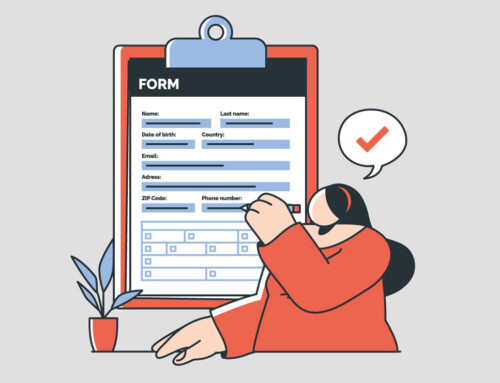Contents
Comparing Workers’ Compensation Claims and Personal Injury: Understanding the Distinctions
Personal injury claims arise when someone is harmed due to another person’s negligence or intentional actions, and the injured party seeks compensation for their injuries and losses. These claims often require proving that the defendant failed to act with reasonable care, leading to the plaintiff’s harm. On the other hand, workers’ compensation claims provide financial and medical benefits to employees who suffer work-related injuries or illnesses. This system operates under a no-fault rule, meaning employees are entitled to benefits regardless of fault. However, in exchange, they generally cannot sue their employer for negligence, except in extreme cases. The main goal of workers’ compensation is to ensure prompt medical treatment and financial support for injured workers.
Employees who suffer personal injury at work claims may need to navigate both personal injury and workers’ compensation lawsuits to secure total compensation for their injuries. Workers’ injury law ensures that employees injured on the job receive compensation for medical expenses and lost wages, typically through a no-fault workers’ compensation system.
Main Differences Between Workers’ Compensation Claims and Personal Injury
Personal injury and workers’ compensation claims differ significantly in several key areas, including the basis of the claims, the types of damages available, and the legal processes involved.
The fault requirement is a key area where personal injury and workers’ compensation claims starkly contrast. In personal injury claims, the injured party must establish the other party’s fault or negligence, a pivotal element that determines the defendant’s liability. Conversely, workers’ compensation operates under a no-fault system where employees need not prove their employer’s fault, but only that the injury or illness is work-related. This clear distinction simplifies the process for employees but limits their ability to seek broader compensation.
The types of damages or compensation available in each claim also differ. Personal injury claims allow for a wide range of damages, including compensatory damages for medical expenses, lost wages, pain and suffering, emotional distress, and loss of enjoyment of life. In cases of particularly egregious behavior by the defendant, punitive damages may also be awarded to punish the wrongdoer and deter similar conduct. In contrast, workers’ compensation claims provide specific benefits, including coverage for medical expenses, wage replacement, disability benefits, and vocational rehabilitation. However, workers’ compensation does not cover pain and suffering or emotional distress, which are significant components of personal injury claims.
Another important distinction is the ability to sue. In personal injury cases, the injured party can sue the person or entity responsible for their injuries including an employer if the injury was not work-related. However, in workers’ compensation claims, employees generally cannot sue their employer for a work-related injury or illness because the workers’ compensation benefits are considered the exclusive remedy. There are some exceptions, such as cases involving intentional harm or gross negligence by the employer, but these are rare.
Statutes of limitations for filing claims also differ between the two. The time limit for filing a personal injury claim varies by jurisdiction and type of injury, typically ranging from one to several years after the injury occurs. For workers’ compensation claims, the timeframe for reporting an injury and filing a claim is usually much shorter, often requiring notification to the employer within days or weeks and filing a claim within a specific period thereafter.
Lastly, the scope of coverage varies between these claims. Personal injury claims can arise from a wide range of incidents, including car accidents, slip and falls, and medical malpractice, among others, and do not need to be work-related. However, Workers’ compensation claims only cover injuries and illnesses directly related to the employee’s job duties or work environment.
Legal Processes for Workers’ Compensation Claims vs Personal Injury
Personal injury and workers’ compensation claims are fundamentally different in purpose and process. Personal injury claims are handled through the traditional civil litigation process, which is typically complex and adversarial. The process begins when the injured party (plaintiff) files a complaint in civil court against the party responsible for the injury (defendant). This process involves several steps, including the service of process, the defendant’s response, and the discovery phase where both parties gather evidence. Various motions may be filed throughout the litigation, and settlement negotiations can occur at any stage. If no settlement is reached, the case proceeds to trial, where a judge or jury determines liability and damages. Appeals can be made if either party is dissatisfied with the trial’s outcome.
In contrast, workers’ compensation claims follow an administrative process designed to be faster and less adversarial. The injured worker must report the injury promptly, after which a claim is filed with the state’s workers’ compensation agency. The employer and their insurance provider review the claim, possibly requiring a medical examination. If the claim is approved, the worker receives benefits for medical expenses, wage replacement, and vocational rehabilitation. Disputes over the claim can be resolved through a hearing before a workers’ compensation judge, and appeals can be made within the workers’ compensation system or to state courts. Settlements may also be negotiated, and in some jurisdictions, claims can be reopened if the worker’s condition worsens.
The Role of Employers and Third Parties in Both Claims
Personal injury at work claims can be complex, often requiring employees to prove employer negligence to receive compensation beyond what is provided by workers’ compensation. The roles of employers and third parties in personal injury and workers’ compensation claims differ significantly, with distinct responsibilities and potential liabilities.
Employers in Workers’ Compensation Claims
- Providing Insurance: Employers must carry workers’ compensation insurance to cover medical benefits and wage replacement for injured employees, regardless of fault.
- Reporting and Filing Claims: Employers are responsible for promptly filing injury claims with the insurance provider, following state-mandated timelines.
- Facilitating Medical Care: Employers may direct employees to specific healthcare providers and ensure they receive appropriate care.
- Returning the Employee to Work: Employers should support the return of injured employees to work, whether in their original or modified roles, to aid rehabilitation.
- Handling Disputes: Employers may be involved in resolving disputes about the injury, benefits, or cause through administrative hearings.
Employers in Personal Injury Claims
- Potential Defendant: Employers may be sued if their negligence leads to an injury, especially if the injured party is not an employee.
- Vicarious Liability: Employers can be held liable for employees’ actions that cause injury if those actions occur within the scope of employment.
- Settlement and Litigation: Employers may need to negotiate settlements or defend against personal injury lawsuits, often relying on liability insurance.
Third Parties in Workers’ Compensation Claims
- Third-Party Liability: If a third party (e.g., a contractor) is responsible for an injury, the worker may sue them while receiving workers’ compensation benefits.
- Subrogation: Workers’ compensation insurers may seek reimbursement from any third-party lawsuit winnings to avoid double recovery by the employee.
Third Parties in Personal Injury Claims
- Direct Defendants: Third parties can be sued directly if their negligence contributed to the injury.
- Contribution and Indemnity: Multiple defendants may share liability for damages, based on their fault levels.
- Insurance Involvement: Third-party insurance may cover settlements or defense costs in personal injury claims.
Common Challenges and Pitfalls in Personal Injury and Workers’ Compensation Claims
Navigating personal injury and workers’ compensation claims can be fraught with challenges and pitfalls, each of which can complicate the process for those seeking compensation. One of the most significant challenges in personal injury claims is proving liability and fault. The injured party must demonstrate that the other party’s negligence directly caused their injury, often requiring substantial evidence such as witness testimony, expert opinions, and physical evidence. If the claimant cannot establish liability, their case may be dismissed or result in a lower settlement.
Another challenge in personal injury cases is accurately calculating damages. This can be particularly complex when future medical expenses, lost earning capacity, and non-economic damages like pain and suffering are involved. Any oversight in documenting losses can result in inadequate compensation, making it essential for claimants to carefully document all losses and work with experts to estimate future needs. Additionally, dealing with insurance companies can present its own set of challenges, as they often employ tactics to minimize payouts. These tactics might include offering lowball settlements, delaying the claims process, or questioning the extent of the claimant’s injuries. Claimants must be prepared to negotiate or seek legal representation to ensure a fair settlement.
Statutes of limitations pose another pitfall in personal injury claims. These laws set deadlines for filing a lawsuit and missing them can result in losing the right to seek compensation. Therefore, understanding the applicable time limits and acting promptly after an injury is crucial. Furthermore, in some jurisdictions, contributory or comparative negligence can reduce or even eliminate compensation if the claimant is found partially at fault for the accident. This makes it essential for claimants to understand how these laws apply to their case and set realistic expectations for their recovery.
Gathering sufficient evidence can also be a significant challenge, especially if the incident occurred suddenly or in a complex environment. Claimants must act quickly to collect evidence such as photographs, medical records, witness statements, and expert opinions to build a strong case. Lastly, many claimants face pressure to settle quickly, particularly if they are dealing with mounting medical bills or lost income. However, settling too early can result in accepting less compensation than might be achieved through continued negotiation or litigation. Therefore, it is important to carefully consider the long-term implications before accepting a settlement.
In workers’ compensation claims, one of the most common pitfalls is missing the deadlines for reporting the injury to the employer or filing the claim with the workers’ compensation board. Failure to meet these deadlines can result in the denial of benefits, making it essential for employees to be aware of the specific timeframes in their jurisdiction and to report injuries as soon as possible. Another common challenge is the denial of claims, which can occur for various reasons, such as disputes over whether the injury is work-related, the severity of the injury, or whether the injury occurred within the scope of employment. If a claim is denied, the employee may need to undergo a lengthy appeals process, which can be stressful and financially challenging.
Proper medical documentation is crucial in workers’ compensation claims, as inadequate documentation can lead to the denial of a claim or reduced benefits. Workers must ensure that their healthcare providers accurately document the cause and extent of their injuries. Additionally, workers may face pressure from employers or financial necessity to return to work before they are fully recovered. Doing so can jeopardize both their health and their workers’ compensation benefits. If a worker returns to work too soon and is unable to perform their duties, it may be challenging to claim additional benefits.
Disputes often arise over the degree of disability resulting from a work-related injury. Employers and insurers may argue that the worker is less disabled than claimed, leading to reduced benefits. Workers may need independent medical evaluations to support their claims for full disability benefits. Independent medical examinations (IMEs), which may be required by the employer or insurance company, can also present challenges. These examinations can result in reports that downplay the severity of the injury or suggest that the worker is capable of returning to work sooner than they believe. Workers should be cautious and consider seeking a second opinion if they feel the IME is biased.
In cases where a third party is responsible for the worker’s injury, navigating the interplay between workers’ compensation benefits and third-party claims can be complex. The workers’ compensation insurer may seek reimbursement through subrogation if the worker receives a settlement from a third-party lawsuit. Managing these interactions often requires legal assistance to protect workers’ rights.
What Happens If Workers’ Compensation Claims and Personal Injury Overlap
When personal injury and workers’ compensation claims overlap, typically due to an employee being injured at work by a third party’s negligence, it creates a complex legal scenario where the worker can pursue both claims simultaneously. Common examples include injuries caused by car accidents, defective products, or unsafe premises. The worker must carefully manage these overlapping claims, starting with filing a workers’ compensation claim for immediate medical and wage benefits, followed by a personal injury lawsuit for additional damages like pain and suffering. Subrogation, where the workers’ compensation insurer seeks reimbursement from any third-party settlement, must be handled properly to avoid legal pitfalls. Given the complexities, legal representation is often crucial to ensure that all claims are coordinated effectively, and that the worker maximizes their overall compensation. While pursuing both claims can provide more comprehensive recovery, it requires careful navigation of legal and insurance requirements.
The Role of Attorneys in Personal Injury vs. Workers’ Compensation Cases
When dealing with both workers’ compensation and personal injury settlement, it is important to coordinate the claims carefully to maximize the overall compensation and avoid potential legal conflicts. Attorneys play pivotal roles in both personal injury and workers’ compensation cases, though their responsibilities differ significantly. In personal injury cases, attorneys focus on proving fault, gathering evidence, negotiating with insurance companies, and advocating in court to secure maximum compensation for damages, including both economic and non-economic losses. In workers’ compensation cases, attorneys guide injured workers through the administrative process, ensuring proper filing, disputing claim denials, and maximizing benefits, such as medical care and wage replacement. In both contexts, attorneys provide essential legal expertise and advocacy, often working on a contingency fee basis to help clients achieve favorable outcomes.
As a personal injury lawyer, you are dedicated to guiding clients through the claims process as they work toward recovery. RunSensible offers customizable intake forms that are tailored to your different types of personal injury cases, including workplace injuries, automobile accidents, and medical malpractice cases. You can provide personal injury clients with the ease and convenience of completing the intake process from the comfort of their own homes using online intake and e-signatures. RunSensible helps deliver a personalized touch with automated communications for new personal injury clients and specifies the frequency of updates and billing procedures to manage expectations effectively.
Conclusion
In conclusion, understanding the key distinctions between personal injury and workers’ compensation claims is essential for anyone navigating these complex legal processes. While personal injury claims require proving fault and allow for broader compensation, workers’ compensation operates on a no-fault basis, providing more limited but quicker benefits. Both systems serve crucial roles in compensating those who have suffered injuries, with personal injury claims focusing on broader accountability and workers’ compensation ensuring swift support for work-related injuries. Legal representation can be invaluable in both contexts, helping claimants maximize their compensation and navigate the specific challenges each type of claim presents.
Disclaimer: The content provided on this blog is for informational purposes only and does not constitute legal, financial, or professional advice.







